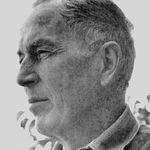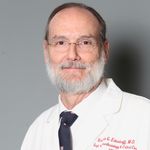The Austin Lamont Professorship of Anesthesia
 The Professorship was endowed in 1995 by Bodine Lamont (1913–2004), the Lamont family, and the Department of Anesthesiology and Critical Care. The Professorship honors Bodine’s husband, Austin Lamont, MD (1905–1969), a member of the Perelman School of Medicine faculty for more than 20 years who played a key role in the development of anesthesiology into a medical discipline.
The Professorship was endowed in 1995 by Bodine Lamont (1913–2004), the Lamont family, and the Department of Anesthesiology and Critical Care. The Professorship honors Bodine’s husband, Austin Lamont, MD (1905–1969), a member of the Perelman School of Medicine faculty for more than 20 years who played a key role in the development of anesthesiology into a medical discipline.
Before coming to Penn, Dr. Lamont made significant contributions to the clinical practice of cardiac anesthesia as part of the Johns Hopkins team famed for developing the surgical procedure for "blue baby syndrome." In this syndrome, an anatomical defect causes low oxygenation of the blood with often fatal consequences. Dr. Lamont joined the Perelman School of Medicine in 1947 to help establish the Department of Anesthesiology and Critical Care in collaboration with Department Chair Robert Dunning Dripps, MD. They developed a house staff of academically trained physicians, rather than nurse anesthetists, and the Department gained recognition as one of the nation’s best. Dr. Lamont was one of the founders of the Association of University Anesthesiologists, which became the national organization for the profession.
The son of an international banker who was part of the J.P. Morgan empire, Dr. Lamont enjoyed the Maine coast throughout his life. He and Bodine Lamont were early activists and supporters of the preservation of Penobscot Bay.
 Current Chairholder
Current Chairholder
Roderic G. Eckenhoff, MD
Dr. Roderic Eckenhoff received his medical training at Northwestern University and then was a US Navy submarine and diving medical officer for 5 years prior to joining Penn’s department of Anesthesiology as a resident in 1984. After a research fellowship with Andrew Somlyo in the Pennsylvania Muscle Institute, he was appointed to the faculty in 1989. Rising through the ranks, he became a tenured professor and the department’s vice chair for research, a position he held for 20 years. After an international search, he was awarded the Austin Lamont Chair in Anesthesiology. This was especially meaningful to Dr. Eckenhoff, since, as a child, he knew Austin Lamont and his wife Bodine quite well, spending time at their idyllic island retreat in Maine. Austin was a member of the Penn anesthesia faculty at the same time as Dr. Eckenhoff’s father, James E. Eckenhoff. Austin was a recruit from Hopkins, where the support for an independent anesthesia department did not yet exist. The Penn department, on the other hand, had the strong support of Ravdin, Schmidt and Richards, and through Bob Dripps had formed what would become a leading, independent department. In addition to being a physician anesthesiologist, Austin was an inventor, environmentalist and humanitarian. He was a quiet and humble man, but extraordinarily insightful and generous.
Dr. Roderic Eckenhoff’s primary area of research has been on the molecular pharmacology of general anesthetics. After receiving his first R01 from NIGMS, he rapidly assembled an interdisciplinary Penn team from Pharmacology, Biophysics and Biochemistry and the Laboratory for Research on the Structure of Matter to write a Program Project grant, awarded on the first submission. This P01 grew to involve every medical school in Philadelphia and Pittsburgh and was renewed three times. This team provided considerable evidence for the molecular targets and mechanisms underlying the magic of general anesthesia. This research also led to new hypotheses linking neurodegeneration and anesthetics, an area that blossomed into new funding streams from NIA, and a large international group of over 100 scientists and physicians that meet and collaborate regularly. and on the cognitive consequences of undergoing anesthesia and surgery. While evidence now indicates the anesthetics to be fairly benign contributors to post-operative neurocognitive disorders, the importance of superimposed neuroinflammation in the setting of a vulnerable brain has become very clear. Dr. Eckenhoff has over 300 publications, and has been continuously NIH funded for over 30 years. Always a passionate mentor, he is now devoting more attention to faculty development. He joined the PSOM COAP over a decade ago, and was recently appointed as co-chair, focusing largely on appointing and promoting tenure track faculty across the School of Medicine.

